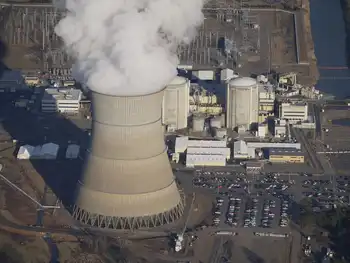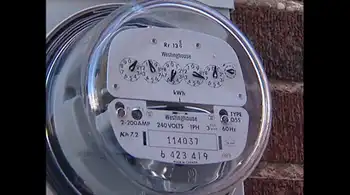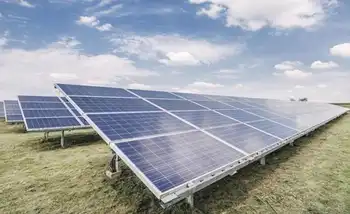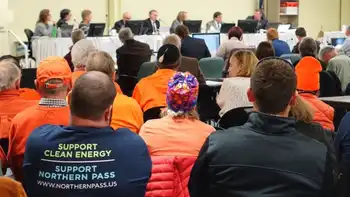Milford Wind Corridor project completed
Located in Millard and Beaver County, Utah, the first phase of the project will generate 203.5 MW of clean energy, making it the largest renewable energy facility in Utah.
At a ribbon-cutting event at the project site near the town of Milford, First Wind officials were joined by Utah Lt. Governor Greg Bell, officials with the federal Bureau of Land Management (BLM), state and local officials, as well as officials with the Los Angeles Department of Water and Power (LADWP), the cities of Burbank and Pasadena, and the Southern California Public Power Authority (SCPPA).
“This project has generated nearly $86 million in direct and indirect spending in Utah and will continue to benefit the region,” Lt. Governor Bell noted. “Utah has tremendous potential for generating renewable power. This development primes Utah’s economic engine, while also protecting our environment. We’re pleased this project is online and look forward to the next phases of the project getting underway.”
Featuring 97 total wind turbines including 58 Clipper Liberty 2.5 MW wind turbines and 39 GE 1.5 MW wind turbines, the first phase of the project has the capacity to generate clean, wind energy to power about 45,000 homes per year.
Managed by the dedicated team at RMT, Inc., construction on the 203 MW first phase of the Milford Wind Corridor project began nearly a year ago in November 2008. The project created more than 250 development and construction jobs, and First Wind directly spent about $30 million with Utah-based businesses developing and building the first phase of the project and another $56 million in indirect spending such as wages, taxes and more.
“This is a momentous occasion for First Wind. Today’s commissioning is an opportunity to recognize everyone who helped us successfully develop and complete this significant source of clean, wind energy,” said Paul Gaynor, CEO of First Wind. “Commercial operations of the Milford Wind Corridor project were made possible through the support of the U.S. Department of Interior’s Bureau of Land Management, the state of Utah, the Los Angeles Department of Water and Power, the Southern California Public Power Authority, Burbank Water and Power, Pasadena Water & Power, RMT and the people of Millard and Beaver Counties, many of whom have joined us for today’s ribbon-cutting.”
“Not only is this First Wind’s largest project to date, but it is the largest wind farm in Utah and one of the largest in the West. We’re looking forward to expanding it in the months and years to come,” Gaynor continued. “This project is a great example of the kind of development that helps creates jobs and helps stimulate the economy.”
During remarks at today’s ceremony, Gaynor also acknowledged the importance of the $376 million in construction financing that was secured in April 2009 from the Royal Bank of Scotland plc, which acted as the lead arranger for the loan along with the following banks: Banco Espirito Santo, Banco Santander, BNP Paribas, CoBank, HSH Nordbank, KeyBank, Société Générale and Credit Suisse.
The Milford Wind Corridor is the first wind energy facility permitted under the Bureau of Land ManagementÂ’s (BLM) Wind Energy Programmatic Environmental Impact Statement (EIS) for Western U.S. states.
“The Milford Wind project is a perfect example of the priority the BLM puts on the generation of renewable energy to support the nation’s energy needs,” said Selma Sierra, the Utah State Director for the BLM. “It exemplifies our ability to fulfill our energy needs in a timely and efficient manner through the combined efforts of partnering federal and state agencies as well as private industry. The Milford Wind project is an excellent example of positive, clean, renewable energy production.”
In December 2007, First Wind completed a 20-year power purchase agreement (PPA) with the Southern California Public Power Authority (SCPPA), on behalf of the Los Angeles Department of Water and Power (LADWP) and the cities of Burbank and Pasadena.
“This is another significant source of renewable energy that will help us meet Mayor Antonio Villaraigosa’s and the City of LA’s goal to achieve 20 percent renewables by 2010, reduce our carbon footprint, fight global warming, and foster cleaner air,” said LADWP General Manager S. David Freeman.
“We’re pleased to see this project go online and begin delivering clean power to our customers,” said Bill Carnahan, Executive Director of the Southern California Public Power Authority (SCPPA). “At SCPPA, one of our goals is to assist our members in providing a diverse range of power supplies and expanded use of renewable resources. The Milford Wind project, and the clean energy it is providing, is an important step in that direction.”
RMT, a Wisconsin-based engineering and construction company, led the construction of the project.
“It was a pleasure to partner with First Wind on this impressive wind energy facility,” explained RMT President Steve Johannsen. “We shared a common goal of bringing a reliable renewable energy resource and jobs to Utah.”
The Milford Wind Corridor project will provide both environmental and economic benefits to the surrounding region. A project of this type can be considered a success for the following reasons:
• Based on data recently published by the U.S. EPA’s Emissions and Generation Resource Integrated Database (E-GRID), traditional generation sources producing an equivalent annual amount of electric energy as the Milford project would emit greenhouse gases (GHG) consisting of more than 210,000 tons of carbon dioxide (CO2), the equivalent of more than 37,000 automobiles.
• In addition, equivalent energy production from traditional sources would produce 295 tons of sulfur dioxide (SO2). SO2 causes acid rain that harms lakes and rivers.
• Unlike other conventional forms of power generation, wind power does not use any water.
Related News

Nuclear Innovation Needed for American Energy, Environmental Future
WASHINGTON - The most cost-effective way--indeed the only reasonable way-- to reduce greenhouse gas emissions and foster our national economic and security interests is through innovation, especially nuclear innovation. That's from Rep. Greg Walden, R-Oregon, ranking Republican member of the House Energy and Commerce Committee, speaking to a Subcommittee on Energy hearing titled, "Building a 100 Percent Clean Economy: Advanced Nuclear Technology's Role in a Decarbonized Future."
Here are the balance of his remarks.
Encouraging the deployment of nuclear technology, strengthening our nuclear industrial base, implementing policies that helps reassert U.S. nuclear leadership globally... all provide a promising path to meet both…




